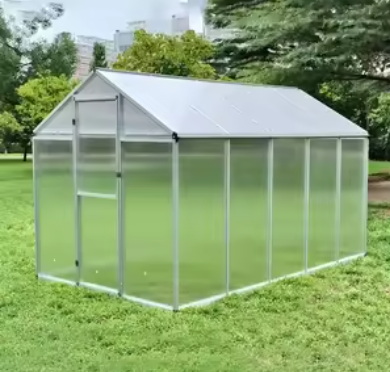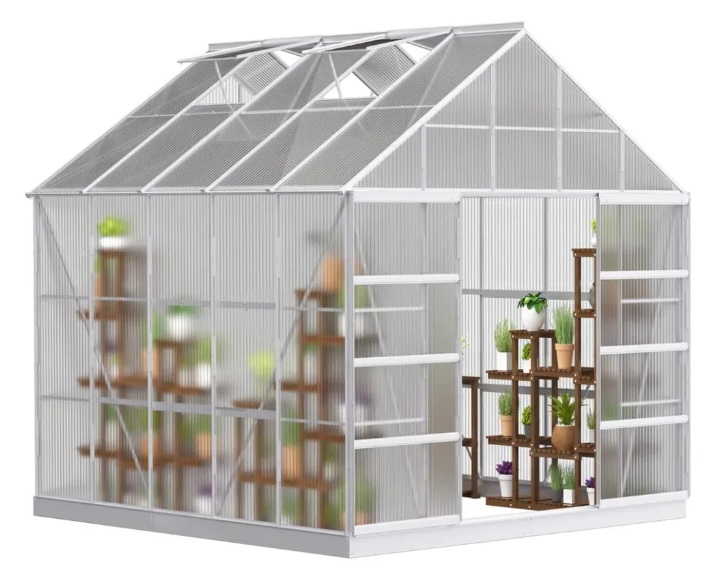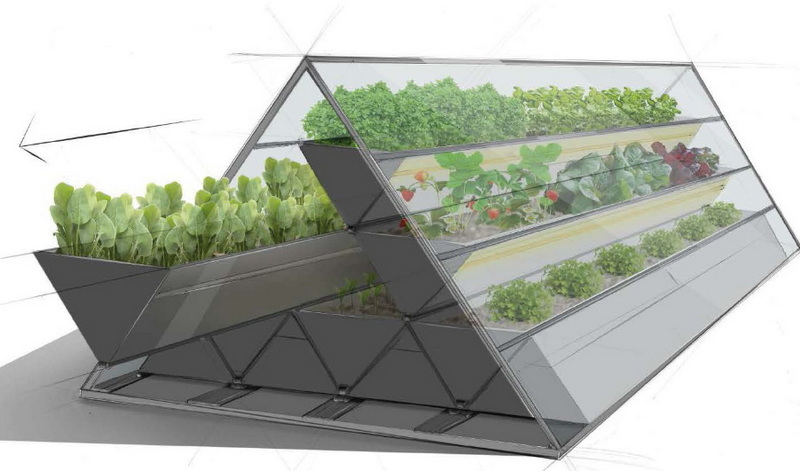Content Menu
● Understanding Aluminum Extrusion Greenhouses
● Lifespan of Aluminum Extrusion Greenhouses
● Factors Influencing Longevity
● Advantages of Aluminum Extrusion Greenhouses
● Maintenance Tips for Longevity
● Comparing Lifespan with Other Materials
● Design Considerations
● Conclusion
● FAQ
>> 1. What is the average lifespan of an aluminum extrusion greenhouse?
>> 2. How do I maintain my aluminum greenhouse?
>> 3. Are aluminum greenhouses better than wooden ones?
>> 4. Can I grow all types of plants in an aluminum greenhouse?
>> 5. Is there any special treatment needed for an aluminum greenhouse?
● Citations:
Aluminum extrusion greenhouses have gained popularity among gardeners and horticulturists for their durability, low maintenance, and aesthetic appeal. Understanding how long these structures last is essential for both new buyers and seasoned greenhouse enthusiasts. This article will explore the longevity of aluminum extrusion greenhouses, factors that influence their lifespan, maintenance practices, and more.

Understanding Aluminum Extrusion Greenhouses
Aluminum extrusion refers to the process of shaping aluminum by forcing it through a die. This technique produces lightweight yet strong profiles that are ideal for greenhouse construction. Unlike traditional wooden greenhouses, aluminum structures are resistant to rot, rust, and decay, making them a reliable choice for long-term use.
The design flexibility of aluminum extrusions allows for various configurations and sizes, accommodating different gardening needs. Whether you are interested in a small hobby greenhouse or a larger commercial structure, aluminum can be tailored to fit your specific requirements.
Lifespan of Aluminum Extrusion Greenhouses
Generally, an aluminum extrusion greenhouse can last 25 years or more, depending on several factors:
- Quality of Materials: High-quality aluminum profiles are designed to withstand various environmental conditions without degrading.
- Construction Quality: Proper assembly and installation can significantly impact the durability of the greenhouse.
- Maintenance: Regular upkeep can extend the life of the greenhouse by preventing damage from pests, weather, and wear.
Factors Influencing Longevity
1. Environmental Conditions: The climate in which the greenhouse is located plays a crucial role in its lifespan. Areas with extreme temperatures or heavy precipitation may require additional considerations in design and maintenance. For example, regions prone to heavy snowfall may necessitate a sloped roof design to prevent snow accumulation.
2. Material Treatment: Aluminum extrusions often undergo treatments such as powder coating, which enhances their resistance to corrosion and UV damage. This treatment can add years to the lifespan of the structure by protecting it from harmful environmental factors.
3. Ventilation and Airflow: Proper ventilation prevents moisture buildup inside the greenhouse, which can lead to mold and mildew. Ensuring adequate airflow helps maintain a healthy environment for plants and extends the life of the structure. Installing automatic vent openers can help regulate temperature and humidity levels effectively.
4. Foundation Stability: A solid foundation is essential for any greenhouse. If the base shifts or settles unevenly, it can lead to structural issues over time. It is advisable to use concrete or treated wood foundations that provide stability against shifting soil conditions.
5. Usage Patterns: The frequency of use and types of plants grown can also influence how long a greenhouse lasts. Heavy plants or frequent changes in layout may put additional stress on the structure. Additionally, if you plan on using your greenhouse for high-intensity gardening practices like hydroponics or aquaponics, ensure that the structure is designed to accommodate such systems.
Advantages of Aluminum Extrusion Greenhouses
- Durability: As mentioned earlier, aluminum is resistant to rot and corrosion, making it a long-lasting option compared to wood or plastic alternatives.
- Low Maintenance: Unlike wooden greenhouses that require regular painting and sealing, aluminum structures need minimal upkeep—typically just cleaning with soap and water.
- Aesthetic Appeal: Aluminum greenhouses can be designed in various styles to complement any garden aesthetic while providing excellent functionality. They can be customized with different glazing options like polycarbonate panels or glass for optimal light transmission.
- Sustainability: Aluminum is a recyclable material, making it an environmentally friendly choice for greenhouse construction. When your greenhouse reaches the end of its life cycle, the materials can be repurposed rather than ending up in landfills.

Maintenance Tips for Longevity
To ensure your aluminum extrusion greenhouse lasts as long as possible, consider implementing the following maintenance practices:
- Regular Cleaning: Dust and dirt can accumulate on surfaces, reducing light transmission. Clean windows and frames regularly using a soft brush and mild soap solution. Avoid abrasive cleaners that could scratch surfaces.
- Inspect Structure: Regularly check screws, bolts, and joints for signs of wear or rust. Tighten any loose fittings to maintain structural integrity. Look out for any signs of corrosion on exposed metal parts; if found, treat them immediately with appropriate rust prevention methods.
- Ventilation Checks: Ensure that vents are functioning correctly to prevent humidity buildup inside the greenhouse. Consider adding fans or exhaust systems if you live in a particularly humid area to promote air circulation.
- Pest Control: Monitor for pests regularly. Use organic methods to control infestations without harming your plants or structure. Employing beneficial insects like ladybugs can help manage pest populations naturally.
- Seasonal Preparations: Prepare your greenhouse for seasonal changes by insulating it during winter months and ensuring proper drainage during heavy rains. Installing thermal curtains can help retain heat during colder months while reducing energy costs.
Comparing Lifespan with Other Materials
When comparing aluminum extrusion greenhouses with other materials like wood or polycarbonate, several key differences emerge:
| Feature | Aluminum Extrusion Greenhouse | Wooden Greenhouse | Polycarbonate Greenhouse |
| Lifespan | 25+ years | 10-15 years | 5-20 years |
| Maintenance | Low | High | Moderate |
| Resistance to Elements | High | Low | Moderate |
| Initial Cost | Moderate | Low | Moderate |
| Insulation Properties | Good | Excellent | Good |
While wooden greenhouses may offer superior insulation properties due to their thickness, they require significantly more maintenance over time due to susceptibility to rot and insect damage.
Design Considerations
When investing in an aluminum extrusion greenhouse, consider various design aspects that can enhance its functionality:
- Size and Layout: Determine how much space you need based on your gardening goals. A larger space allows for more plant varieties but requires more resources in terms of heating and cooling.
- Glazing Options: The type of glazing you choose affects light transmission and insulation properties. Glass offers excellent light penetration but is heavier; polycarbonate panels are lighter and provide good insulation while being less prone to breakage.
- Accessibility Features: Consider incorporating features such as wide doors or raised beds that make it easier to access plants without straining your back.
- Irrigation Systems: Installing an automated irrigation system can save time and ensure your plants receive consistent moisture levels without manual effort.
Conclusion
In conclusion, an aluminum extrusion greenhouse is a wise investment for both amateur and professional gardeners due to its durability, low maintenance requirements, and aesthetic versatility. With proper care and attention to environmental factors, these greenhouses can last 25 years or more, providing a reliable space for growing plants year-round.
Investing in quality materials and construction practices will further enhance longevity. By following recommended maintenance tips and being mindful of environmental conditions, you can ensure that your aluminum extrusion greenhouse remains a productive asset in your gardening endeavors for decades to come.

FAQ
1. What is the average lifespan of an aluminum extrusion greenhouse?
The average lifespan is typically around 25 years or more with proper maintenance.
2. How do I maintain my aluminum greenhouse?
Regular cleaning, structural inspections, pest control measures, and ensuring proper ventilation are key maintenance practices.
3. Are aluminum greenhouses better than wooden ones?
Yes, aluminum greenhouses generally offer better durability and lower maintenance compared to wooden structures.
4. Can I grow all types of plants in an aluminum greenhouse?
Yes, you can grow a wide variety of plants in an aluminum greenhouse as long as you provide appropriate conditions such as temperature control and humidity management.
5. Is there any special treatment needed for an aluminum greenhouse?
While minimal treatment is required due to its natural resistance to corrosion, powder coating can enhance its longevity further by protecting against UV damage.
Citations:
[1] https://www.alitex.co.uk/blog/2023/09/12/benefits-of-choosing-an-aluminium-greenhouse/
[2] https://www.bloomcabin.com/us/blog/maintenance-of-an-aluminum-greenhouse-tips-and-best-practices.html
[3] https://www.alamy.com/stock-photo/aluminum-extrusion.html
[4] https://www.youtube.com/watch?v=iiGlq7408ME
[5] https://dutchgreenhouses.com/en/greenhouse-construction/aluminium-system
[6] https://www.insongreen.com/polycarbonate-vs-glass-for-commercial-greenhouses/
[7] https://www.advancingalternatives.com/greenhouse-construction/aluminum-profiles/
[8] https://allhomesteading.co.uk/2023/01/24/aluminium-vs-wooden-greenhouses/
[9] https://edmolimited.co.uk/education/frequently-asked-questions/aluminium-extrusion/






















